News & Awards.
TMG Partners has won awards for many projects
including honors for “Best Mixed Use,”
“Best Office,” and “Best Historic Rehabilitation”.

SAN DIEGO — Previously the site of a single-story, single-family home, the lot on Manchester Road in College Area has been converted by local real estate developer Atlas West Group into an apartment complex with seven distinct units, each ranging in size from 512 square feet to 1,100 square feet.
The College Area complex is, at least according to some housing policy wonks, the perfect example of how the city of San Diego’s generous allowances for accessory dwelling units, sometimes called granny flats or casitas, have spawned new homes for people of varying income levels in areas where none were previously allowed.
The multi-unit project was on display Saturday for dozens of housing advocates and professionals from around the country who convened this week in Point Loma for a middle-income housing policy reform forum, Build the Middle: A National Housing Convening. The event, put on by the not-for-profit Casita Coalition, invited attendees to tour the College Area property and two others like it to see San Diego’s bonus ADU program in action.
First approved in 2020, the controversial bonus ADU program allows property owners to build a bonus market-rate ADU for each ADU they agree to rent at a reduced rate to low-income residents for 10 years or moderate-income residents for 15 years. In areas near transit, there is no limit to the number of ADUs a property owner can build.
“What San Diego does in terms of density bonus for ADUs and other housing policies is incredibly progressive. And I brag about it everywhere I go,” said Ryan O’Connell, an event attendee and Napa-based YouTuber whose “How to ADU” channel aims to help homeowners build accessory dwelling units. “It’s an example of a city saying, yes, we’ve adopted the state requirements and also we’ve got some really clever ways to apply the best-in-practice housing and growth policies too.”
The day started with opening remarks from San Diego Mayor Todd Gloria, who had earlier this year hoped to deploy new state legislation to allow as many as 10 housing units on a single property before being met with insurmountable push back. His aggressive stance on loosening building restrictions is personal, Gloria told event attendees.
“My grandparents came here from all around the world in the 1930s, 1940s and 1950s. And they were able to participate and serve (in the Navy), and then they concluded their service and they chose to stay in San Diego. All of them were able to buy homes in San Diego, which was a game changer for our family,” Gloria said. “Fast forward to today where myself and my brother are both renters. I wonder about whether or not my nieces and nephew will be able to buy a home in San Diego. My public service is about making sure that the answer to that question is eventually yes.”
After the remarks, 55 event attendees split between two buses, stopping by the College Area site after first visiting Atlas West Group’s project on Angwin Drive in Serra Mesa and another six-unit complex on 49th Street in Talmadge.
At Angwin Drive, Atlas has turned a single-family home on an 8,400 square-foot lot into six apartment homes, some of which provided tour members with a direct view of a neighbor’s, in-progress backyard picnic. The developer, which spent around $2.75 million on the project, was able to build the units thanks to the bonus ADU program, opting to deed restrict two of its units for middle-income families making 110 percent or less of the area median income.
That means one of the units, a 2-bedroom, 1-bath apartment, will rent for $2,760 a month when it comes to market in the near future, said Atlas executive Trent Hullen. By contrast, the property’s market-rate 3-bedroom, 2-bath unit will rent for $4,000 a month.
Of course, neighbors aren’t always on board with the additional density. Locally, a group called Neighbors for a Better San Diego has been a vocal opponent to the city’s bonus program. And the side effects of more units — more cars competing for already limited street parking, private backyards being towered over by new two-story buildings, and developers buying single-family homes — were topics of discussion on Saturday’s tour.
“I have conversations across the spectrum from resistance to total acceptance,” Casita Coalition Consultant and former San Diego Senior Planner Timothy Pawlak told tour-goers, acknowledging the larger debate around ADUs.
Pawalk noted though that larger, multi-unit ADU projects like Angwin Drive will not be as ubiquitous as feared by some community members because of the infrastructure costs associated with adding that many additional units.


